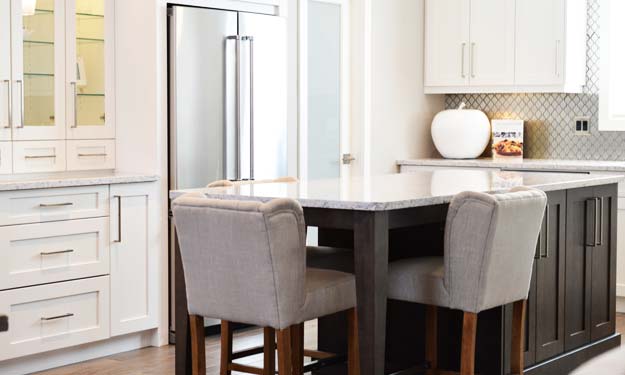Reducing Clutter

Simple Steps to Reduce the Clutter in Your Home
Tips to Help Reduce Clutter
Did you know that clutter is scientifically proven to raise stress levels? I, for one, don’t need more stress in my life. Reducing clutter isn’t just about creating clean surfaces – it’s about creating peace of mind. Clutter is defined as “a collection of things lying about in an untidy mass,” and although it often seems like a by-product of daily life, we don’t have to live with it. The good news? Reducing clutter is possible with a few intentional habits and a willingness to let go.
We often accumulate things on impulse – because it was on sale, it felt sentimental, or we thought we couldn’t live without it. Over time, this clutter adds up. But here’s the truth: you can take control. Reducing clutter begins with small decisions that make a big impact.
Reducing Clutter by Recycle the Clutter
One of the easiest ways to begin reducing clutter is by deciding what can be recycled, donated, or tossed. A good time for this is during spring and fall cleanings.
Start with three piles:
- Donate: Gently used items someone else could use.
- Trash: Broken or unusable items.
- Keep: Items you truly need and use.
When in doubt, ask yourself: Would I buy this again today? If the answer is no, it’s time to let it go.
Bonus tip: If you’re feeling ambitious, host a garage sale and donate or recycle what’s left.
Reducing Clutter, Room by Room
Instead of trying to tackle your whole house at once, focus on reducing clutter one room at a time. This makes the process manageable and less overwhelming.
Work through common clutter zones:
- Kitchen drawers: Do you really need three broken can openers?
- Closets: Outgrown clothes and shoes can be donated.
- Bathroom cabinets: Expired products? Toss them.
- Garage or shed: Clear out unused tools and appliances.
- Pantry: Check expiration dates and declutter opened packages.
Even a few minutes a day in one room makes progress toward your clutter-free goals.
Don’t Forget the Hidden Clutter
Just because it’s hidden doesn’t mean it’s not clutter. Often, we stash things in the back of closets, boxes in the garage, or under the bed – and forget about them.
Take a moment to go through:
- Under-sink cabinets
- Linen closets
- Junk drawers
- Toy boxes
- Overflowing shelves
Reducing clutter also means rediscovering forgotten items – and letting go of the ones that no longer serve a purpose.
Reducing Clutter Means Making Tough Choices
Sometimes, the hardest part of reducing clutter is making peace with what we’re holding onto. Whether it’s a broken tool from your grandfather or that sweater you haven’t worn in five years – it’s time to decide.
Ask yourself:
- Is it usable?
- Is it valuable to me today?
- Could someone else use it more?
Keep only what adds value or joy to your life. Let the rest go – with no guilt.
Reducing Sentimental Clutter (Without the Guilt)
Sentimental clutter is one of the toughest to reduce – but it’s possible. You don’t need to keep every baby outfit, hand-drawn card, or inherited dish to preserve the memory.
Instead:
- Take photos of sentimental items and create a keepsake album.
- Turn baby clothes into a quilt or fabric art.
- Offer family heirlooms to relatives who have the space and interest.
Get your kids involved in this process too. You might be surprised how ready they are to let go – especially when they get to be part of the decision-making.
Keep Moving Forward: Staying Clutter-Free
Reducing clutter isn’t a one-time event – it’s a lifestyle shift. The key to staying clutter-free is creating habits that prevent buildup in the first place.
- Set a recurring donation day (monthly or seasonally).
- Create a “donate bin” where unwanted items go immediately.
- Follow the “one in, one out” rule: for every new item, something old goes.
- Do a quick 5-minute tidy-up each night.
Good habits take work to build – but once you do, they help you stay ahead of the mess for good.
Donate or Sell Regularly
Keep a container in your closet or garage for donation items. When it’s full, take it to a local donation center. (Don’t forget your tax receipt!)
If you’d prefer to sell:
- Use apps like Facebook Marketplace, OfferUp, or local consignment stores.
- This option gives you some cash back – and motivates you to let go of even more.
Make a List and Stick to It
One way to stop clutter before it starts? Shop smarter. Always use a list – and follow it. If something catches your eye that’s not on the list, pause. Do you really need it? Probably not.
Impulse purchases are often the root cause of clutter. Being intentional saves space and money.
Repurpose Instead of Buying
Craving a change? Before buying something new, look around your home. You may be able to:
- Rearrange a room for a fresh look.
- Repurpose a table or chair with a coat of paint.
- Decorate with what you already have.
Reducing clutter doesn’t mean denying yourself joy – it just means being thoughtful about what you bring in.
Out with the Old, In with the New
Whenever you do bring something new into the house, make it a rule: something old must go. This helps maintain balance and prevents clutter from sneaking back in.
A new toy? Donate an old one. A new blender? Recycle the one that no longer works.
A Clutter-Free Life Is Within Reach
All you need is a gentle nudge in the right direction. Reducing clutter is less about perfection and more about progress. With each item you part with, you’re creating a cleaner space, a calmer mind, and a healthier home.






